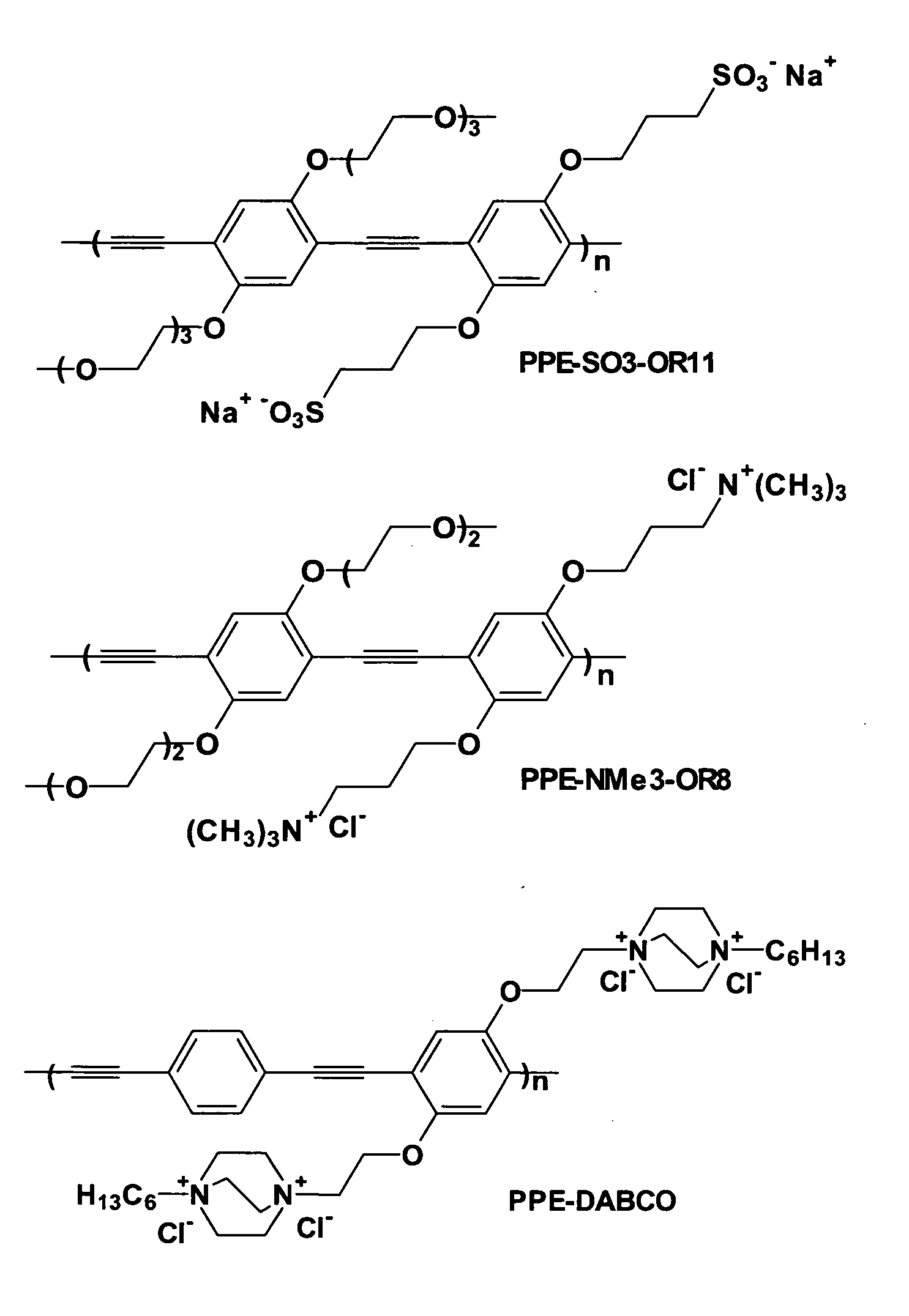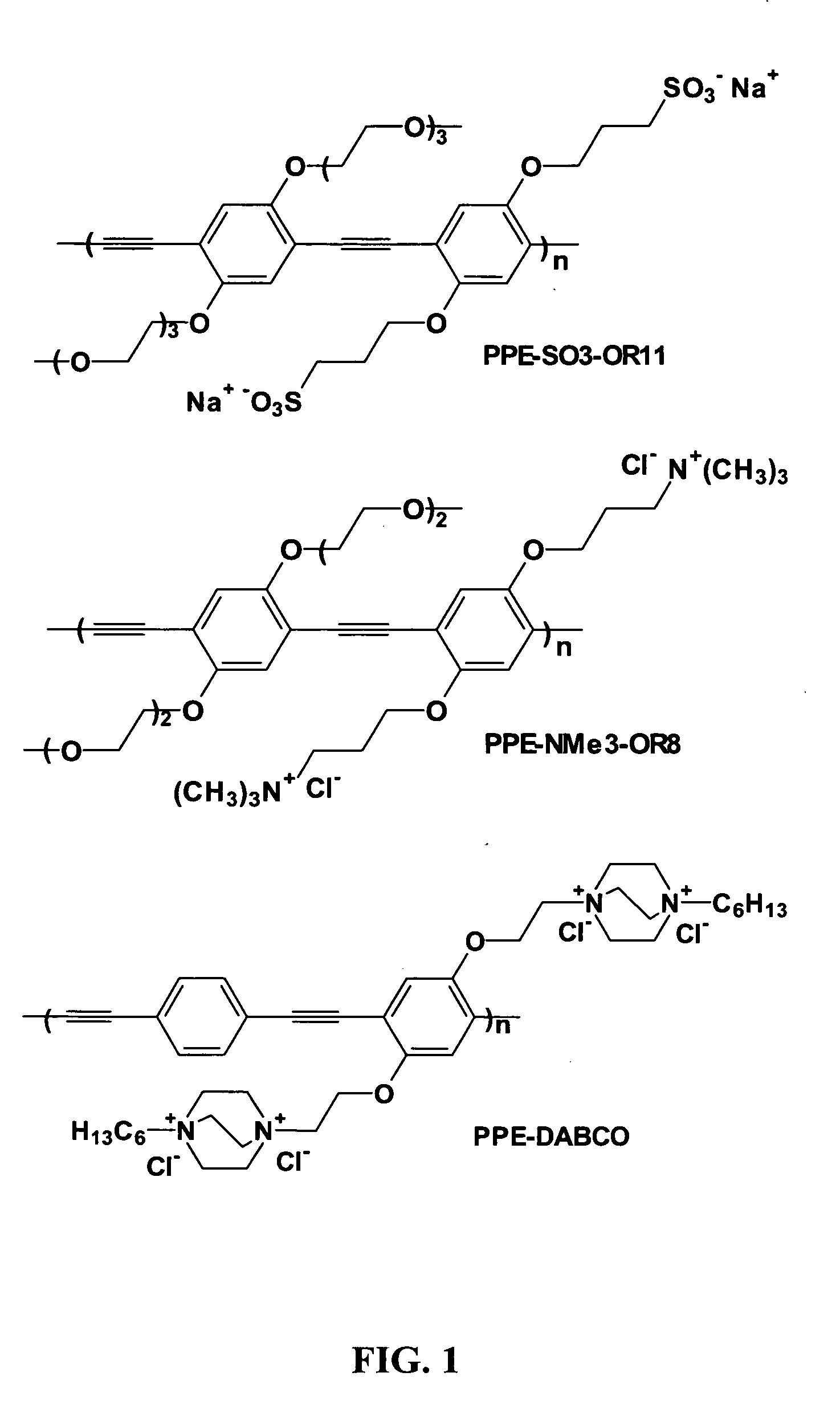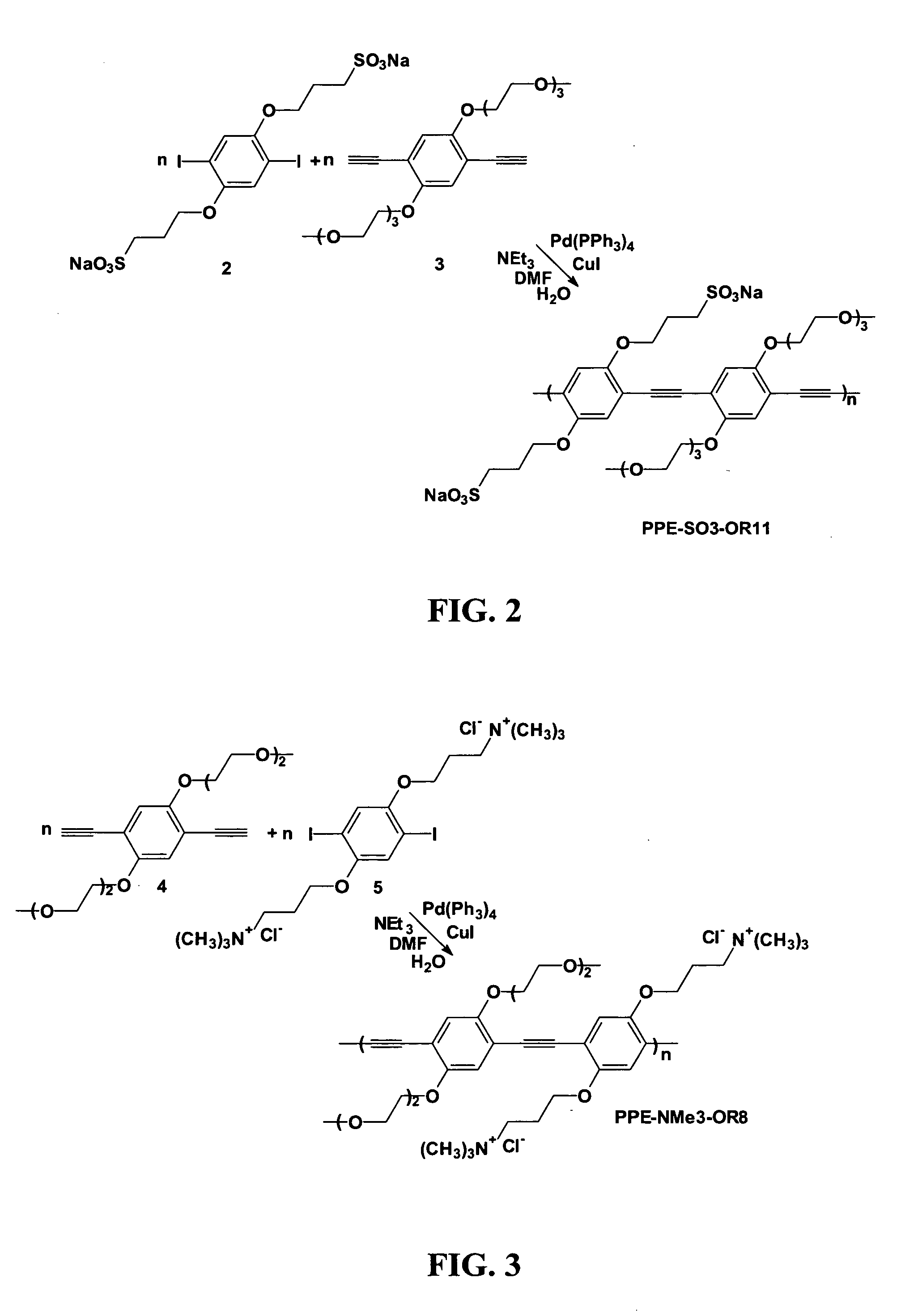Surface Grafted Conjugated Polymers
a conjugated polymer and surface grafting technology, applied in the field of surface grafted conjugated polymers, can solve the problems that the general method for preparing silica particles that are surface grafted with a conjugated polymer is not available, and achieve the effects of inhibiting the fluorescence of cpe, promoting an affinity with water, and enhancing the mater affinity of cp
- Summary
- Abstract
- Description
- Claims
- Application Information
AI Technical Summary
Benefits of technology
Problems solved by technology
Method used
Image
Examples
example 1
[0044]4-Iodo-N-[3-(trimethoxysilyl)propyl]-benzamide (1) was prepared, as illustrated in FIG. 5, where a solution of 3-aminopropyltrimethoxysilane (1.78 mL, 10 mmol) in 10 mL of dichloromethane was added dropwise to a suspension of 4-iodobenzoyl chloride (1.33 g, 5 mmol) in 20 mL of dichloromethane at 0° C. The mixture was stirred for 1 hour and solvent was evaporated in vacuo. The residue was purified by column chromatography on silica using 2% methanol in chloroform. The solvent was removed by rotary evaporation to give a viscous oil. 1H NMR (300 MHz, CDCl3): δ 0.70 (t, J=8.1 Hz, 2H), 1.73 (m, 2H), 3.42 (m, 2H), 6.64 (br, 1H), 7.49 (d, J=8.7 Hz, 2H), 7.76 (d, J=8.7 Hz, 2H). 13C NMR (75 MHz, CDCl3): δ 6.81, 22.78, 42.54, 50.89, 98.41, 128.78, 134.44, 137.91, 167.03. HRMS calculated for C13H20INO4Si 409.0206, found 410.0295 (MH+).
example 2
[0045]2,5-Diiodo-1,4-bis(3-sulfonatopropoxy)benzene (2) of FIG. 2, was synthesized in the following manner adapted from Tan et al., Chem. Commun. 2002, 446-7. A solution of diiodohydroquinone (5.79 g, 16 mmol) in 100 mL of THF was added dropwise into a solution of NaH (60% in oil, 1.6 g, 40 mmol) in 300 mL of THF at 0° C. After 20 minutes of stirring, a solution of 1-(2-bromoethoxy)-2-(2-methoxyethoxy)ethane (9.08 g, 40 mmol) in 50 mL THF was added dropwise. The mixture was refluxed for 2 hours. After cooling of the mixture, small amount of water was added and solvent was removed in vacuo. The residue was extracted with dichloromethane and washed with brine. After evaporation of the solvent, product was purified by column chromatography on silica using 1:1 mixture of ethyl acetate and hexane. Solvent was removed by rotary evaporation to give 1,4-diiodo-2,5-bis[2-[2-(2-methoxyethoxy)ethoxy]ethoxy]benzene as a yellow oil. 1H NMR (300 MHz, CDCl3): d 3.38 (s, 6H), 3.55 (m, 4H), 3.66 (m,...
example 3
[0048]As shown in FIG. 2, a water soluble CPE (PPE-SO3-OR11) was prepared by the condensation of Compound 2 (650 mg, 1 mmol), compound 3 (451 mg, 1 mmol), CuI (5.7 mg, 0.03 mmol), and Pd(PPh3)4 (35 mg, 0.03 mmol) were dissolved in a mixture of 30 mL of DMF, 20 mL of water, and 10 mL of triethylamine. The mixture was refluxed overnight. The reaction mixture was concentrated by rotary evaporation and added dropwise into 250 mL of acetone. The precipitate was dissolved in a small amount of Millipore water and treated with 50 mg of NaCN. The polymer was precipitated again in 250 mL of acetone, redissolved in water, filtered through quantitative filter paper, and filtered using a 25 μM glass filter. The solution was dialyzed against water using 6-8 kD MWCO cellulose membrane. The solution was concentrated via rotary evaporation and the polymer was precipitated with acetone. The precipitate was collected by centrifugation and washed with acetone. The product was a yellow powder and it was...
PUM
| Property | Measurement | Unit |
|---|---|---|
| concentrations | aaaaa | aaaaa |
| concentrations | aaaaa | aaaaa |
| density | aaaaa | aaaaa |
Abstract
Description
Claims
Application Information
 Login to View More
Login to View More - R&D
- Intellectual Property
- Life Sciences
- Materials
- Tech Scout
- Unparalleled Data Quality
- Higher Quality Content
- 60% Fewer Hallucinations
Browse by: Latest US Patents, China's latest patents, Technical Efficacy Thesaurus, Application Domain, Technology Topic, Popular Technical Reports.
© 2025 PatSnap. All rights reserved.Legal|Privacy policy|Modern Slavery Act Transparency Statement|Sitemap|About US| Contact US: help@patsnap.com



